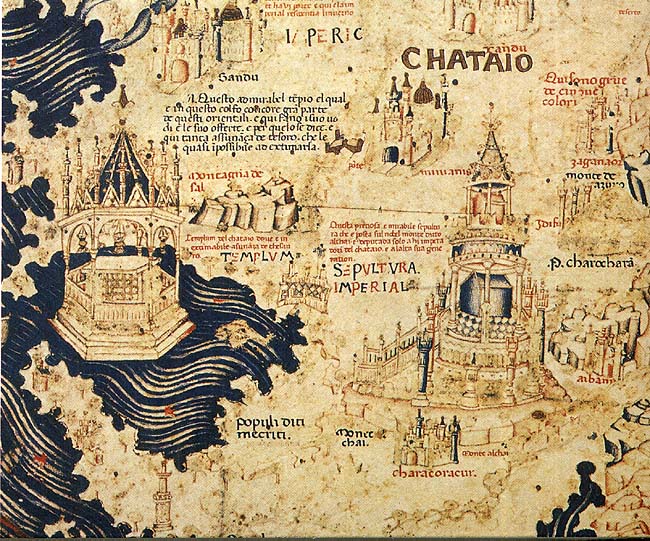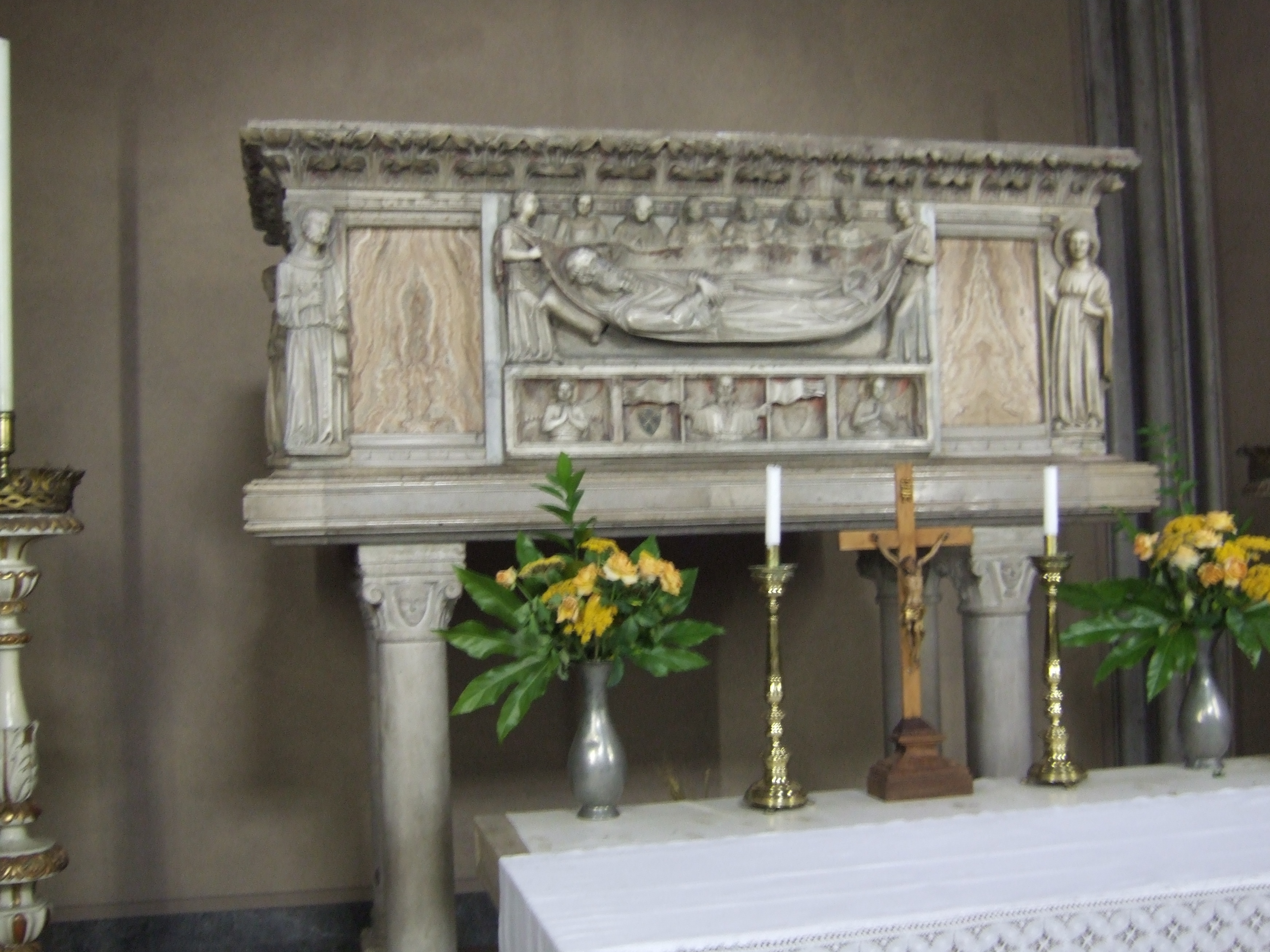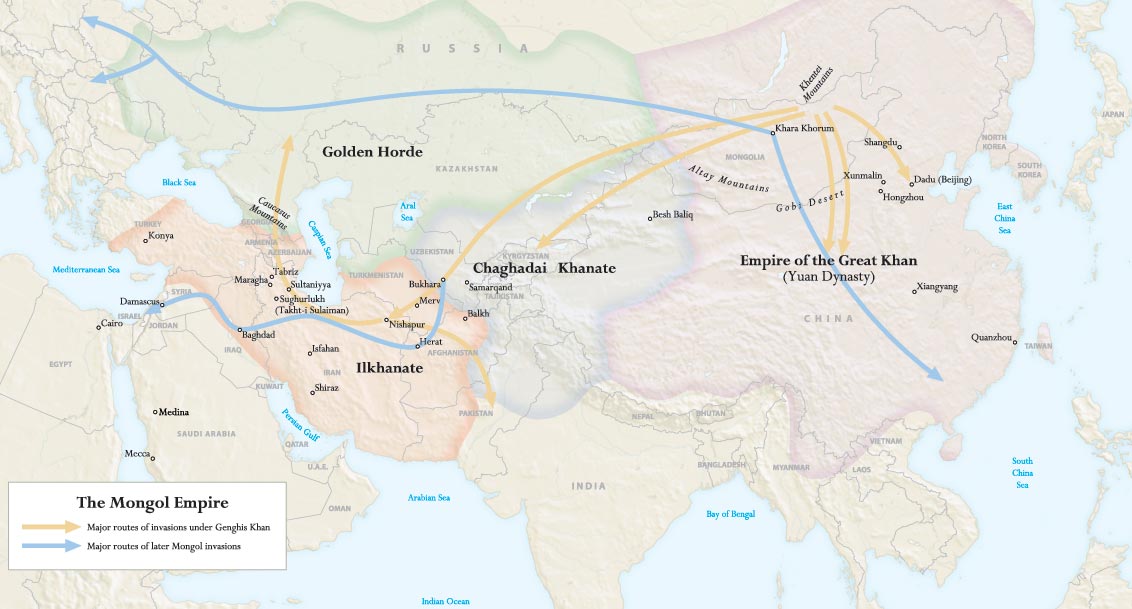|
Cathay
Cathay ( ) is a historical name for China that was used in Europe. During the early modern period, the term ''Cathay'' initially evolved as a term referring to what is now Northern China, completely separate and distinct from ''China'', which was a reference to southern China. As knowledge of East Asia increased, Cathay came to be seen as the same polity as China as a whole. The term ''Cathay'' became a poetic name for China. The name ''Cathay'' originates from the term '' Khitan'' ( zh, c=契丹, p=Qìdān), a para-Mongolic nomadic people who ruled the Liao dynasty in northern China from 916 to 1125, and who later migrated west after they were overthrown by the Jin dynasty to form the Qara Khitai (Western Liao dynasty) for another century thereafter. Originally, this name was the name applied by Central and Western Asians and Europeans to northern China; the name was also used in Marco Polo's book on his travels in Yuan dynasty China (he referred to southern China as '' Mang ... [...More Info...] [...Related Items...] OR: [Wikipedia] [Google] [Baidu] |
Marco Polo
Marco Polo (; ; ; 8 January 1324) was a Republic of Venice, Venetian merchant, explorer and writer who travelled through Asia along the Silk Road between 1271 and 1295. His travels are recorded in ''The Travels of Marco Polo'' (also known as ''Book of the Marvels of the World '' and ''Il Milione'', ), a book that described the then-mysterious culture and inner workings of the Eastern world, including the wealth and great size of the Mongol Empire and China under the Yuan dynasty, giving Europeans their first comprehensive look into China, Persia, India, Japan, and other Asian societies. Born in Venice, Marco learned the mercantile trade from his father and his uncle, Niccolò and Maffeo Polo, Niccolò and Maffeo, who travelled through Asia and met Kublai Khan. In 1269, they returned to Venice to meet Marco for the first time. The three of them embarked on an epic journey to Asia, exploring many places along the Silk Road until they reached "Cathay". They were received by the ... [...More Info...] [...Related Items...] OR: [Wikipedia] [Google] [Baidu] |
Names Of China
The names of China include the many contemporary and historical designations given in various languages for the East Asian country known as in Standard Chinese, a form based on the Beijing dialect of Mandarin Chinese, Mandarin. The English name "China" was borrowed from Portuguese during the 16th century, and its direct cognates became common in the subsequent centuries in the West. It is believed to be a borrowing from Middle Persian, and some have traced it further back to the Sanskrit word () for the nation. It is also thought that the ultimate source of the name China is the Chinese word , the name of the Qin dynasty that ultimately unified China after existing as a Qin (state), state within the Zhou dynasty for many centuries prior. However, there are alternative suggestions for the etymology of this word. Chinese names for China, aside from , include , , and . While Zhonghua minzu, official notions of Chinese nationality do not make any particular reference to ethnicity ... [...More Info...] [...Related Items...] OR: [Wikipedia] [Google] [Baidu] |
Odoric Of Pordenone
Odoric of Pordenone (c. 1280–14 January 1331) was a Franciscan friar and missionary explorer from Friuli in northeast Italy. He journeyed through India, Sumatra, Java, and China, where he spent three years in the imperial capital of Khanbaliq (now Beijing). After more than ten years of travel, he returned home and dictated a narrative of his experiences and observations called the ''Relatio'', highlighting various cultural, religious, and social peculiarities he encountered in Asia. His manuscript was copied multiple times and distributed widely across Europe, both in the original Latin and several vernacular translations including Italian, French, and German. The ''Relatio'' was an important contribution to Europe's growing awareness of the Far East. Odoric's account was a primary source for the account of '' Mandeville's Travels''. Many of the incredible reports about Asia in Mandeville have proven to be versions of Odoric's eyewitness descriptions. After his death, Odoric ... [...More Info...] [...Related Items...] OR: [Wikipedia] [Google] [Baidu] |
Qara Khitai
The Qara Khitai, or Kara Khitai ( zh, t=喀喇契丹, s=哈剌契丹, p=Kālā Qìdān or zh, c=黑契丹, p=Hēi Qìdān, l=Black Khitan, links=no), also known as the Western Liao ( zh, t=西遼, p=Xī Liáo, links=no), officially the Great Liao ( zh, t=大遼, p=Dà Liáo, links=no), was a dynastic regime based in Central Asia ruled by the Yelü clan of the Khitan people. Being a rump state of the Khitan-led Liao dynasty, Western Liao was culturally Sinicized to a large extent, especially among the elites consisting of Liao refugees. The dynasty was founded by Yelü Dashi (Emperor Dezong), who led the remnants of the Liao dynasty from Manchuria to Central Asia after fleeing from the Jurchen-led Jin dynasty conquest of northern China. The empire was usurped by the Naimans under Kuchlug in 1211; traditional Chinese, Persian, and Arab sources consider the usurpation to be the end of the dynasty, even though the empire would not fall until the Mongol conquest in 1218. So ... [...More Info...] [...Related Items...] OR: [Wikipedia] [Google] [Baidu] |
Khitan People
The Khitan people (Khitan small script: ; ) were a historical Eurasian nomads, nomadic people from Northeast Asia who, from the 4th century, inhabited an area corresponding to parts of modern Mongolia, Northeast China and the Russian Far East. As a people descended from the proto-Mongols through the Xianbei, Khitans spoke the now-extinct Khitan language, a Para-Mongolic languages, Para-Mongolic language related to the Mongolic languages. The Khitan people founded and led the Liao dynasty (916–1125), which dominated a vast area of Siberia, Mongolia and Northern China. The Khitans of the Liao dynasty used two independent writing systems for their language: Khitan small script and Khitan large script. After the fall of the Liao dynasty in 1125 following the Jin dynasty (1115–1234)#Rise of the Jin and fall of the Liao, Jurchen invasion, many Khitans followed Yelü Dashi's group westward to establish the Qara Khitai or Western Liao dynasty, in Central Asia, which lasted nearly a ... [...More Info...] [...Related Items...] OR: [Wikipedia] [Google] [Baidu] |
Yuan Dynasty
The Yuan dynasty ( ; zh, c=元朝, p=Yuáncháo), officially the Great Yuan (; Mongolian language, Mongolian: , , literally 'Great Yuan State'), was a Mongol-led imperial dynasty of China and a successor state to the Mongol Empire after Division of the Mongol Empire, its division. It was established by Kublai (Emperor Shizu or Setsen Khan), the fifth khagan-emperor of the Mongol Empire from the Borjigin clan, and lasted from 1271 to 1368. In Chinese history, the Yuan dynasty followed the Song dynasty and preceded the Ming dynasty. Although Genghis Khan's enthronement as Khagan in 1206 was described in Chinese language, Chinese as the Han Chinese, Han-style title of Emperor of China, Emperor and the Mongol Empire had ruled territories including modern-day northern China for decades, it was not until 1271 that Kublai Khan officially proclaimed the dynasty in the traditional Han style, and the conquest was not complete until 1279 when the Southern Song dynasty was defeated in t ... [...More Info...] [...Related Items...] OR: [Wikipedia] [Google] [Baidu] |
The Travels Of Marco Polo
''Book of the Marvels of the World'' ( Italian: , lit. 'The Million', possibly derived from Polo's nickname "Emilione"), in English commonly called ''The Travels of Marco Polo'', is a 13th-century travelogue written down by Rustichello da Pisa from stories told by the Venetian explorer Marco Polo. It describes Polo's travels through Asia between 1271 and 1295, and his experiences at the court of Kublai Khan. The book was written by the romance writer Rustichello da Pisa, who worked from accounts which he had heard from Marco Polo when they were imprisoned together in Genoa. Rustichello wrote it in Franco-Venetian,Maria Bellonci, "Nota introduttiva", Il Milione di Marco Polo, Milano, Oscar Mondadori, 2003, p. XI TALIAN/ref> a literary language widespread in northern Italy between the subalpine belt and the lower Po between the 13th and 15th centuries. It was originally known as or ("''Description of the World''"). The book was translated into many European languages in ... [...More Info...] [...Related Items...] OR: [Wikipedia] [Google] [Baidu] |
Empire Of The Great Khan (Catayo) According To The Catalan Atlas (1375)
The Yuan dynasty ( ; zh, c=元朝, p=Yuáncháo), officially the Great Yuan (; Mongolian language, Mongolian: , , literally 'Great Yuan State'), was a Mongol-led imperial dynasty of China and a successor state to the Mongol Empire after Division of the Mongol Empire, its division. It was established by Kublai (Emperor Shizu or Setsen Khan), the fifth khagan-emperor of the Mongol Empire from the Borjigin clan, and lasted from 1271 to 1368. In Chinese history, the Yuan dynasty followed the Song dynasty and preceded the Ming dynasty. Although Genghis Khan's enthronement as Khagan in 1206 was described in Chinese language, Chinese as the Han Chinese, Han-style title of Emperor of China, Emperor and the Mongol Empire had ruled territories including modern-day northern China for decades, it was not until 1271 that Kublai Khan officially proclaimed the dynasty in the traditional Han style, and the conquest was not complete until 1279 when the Southern Song dynasty was defeated in t ... [...More Info...] [...Related Items...] OR: [Wikipedia] [Google] [Baidu] |
Manichaean
Manichaeism (; in ; ) is an endangered former major world religion currently only practiced in China around Cao'an,R. van den Broek, Wouter J. Hanegraaff ''Gnosis and Hermeticism from Antiquity to Modern Times''. SUNY Press, 1998 p. 37 founded in the 3rd century CE by the Parthian prophet Mani (216–274 CE), in the Sasanian Empire. Manichaeism teaches an elaborate dualistic cosmology describing the struggle between a good, spiritual world of light, and an evil, material world of darkness. Through an ongoing process that takes place in human history, light is gradually removed from the world of matter and returned to the world of light, whence it came. Mani's teaching was intended to "combine", succeed, and surpass the teachings of Platonism, Christianity, Zoroastrianism, Buddhism, Marcionism, Hellenistic and Rabbinic Judaism, Gnostic movements, Ancient Greek religion, Babylonian and other Mesopotamian religions, and mystery cults.Arendzen, John (1 October 1910).Manich ... [...More Info...] [...Related Items...] OR: [Wikipedia] [Google] [Baidu] |
China
China, officially the People's Republic of China (PRC), is a country in East Asia. With population of China, a population exceeding 1.4 billion, it is the list of countries by population (United Nations), second-most populous country after India, representing 17.4% of the world population. China spans the equivalent of five time zones and Borders of China, borders fourteen countries by land across an area of nearly , making it the list of countries and dependencies by area, third-largest country by land area. The country is divided into 33 Province-level divisions of China, province-level divisions: 22 provinces of China, provinces, 5 autonomous regions of China, autonomous regions, 4 direct-administered municipalities of China, municipalities, and 2 semi-autonomous special administrative regions. Beijing is the country's capital, while Shanghai is List of cities in China by population, its most populous city by urban area and largest financial center. Considered one of six ... [...More Info...] [...Related Items...] OR: [Wikipedia] [Google] [Baidu] |
Abu Said Gardezi
Abū Saʿīd ʿAbd-al-Ḥayy ibn Żaḥḥāk ibn Maḥmūd Gardīzī (), better known as Gardizi (), was an 11th-century Persian historian and official, who is notable for having written the ''Zayn al-akhbar'', one of the earliest history books written in New Persian. Little is known of Gardizi personally. He was probably from Gardiz in the region of Zamindawar, as his nisba implies.; His father's name was Zahhak, a name that was seemingly popular in the region. Gardizi started his career as an official of the Ghaznavid monarch Mahmud of Ghazni (), and was an eyewitness to many of the events that occurred under the latter. In his ''Zayn al-akbar'', Gardizi took a dispassionate view of history which was fairly remarkable for its time. It consisted of a history of the pre-Islamic kings of Iran, Muhammad and the Caliphs until the year 1032. Included is a history of the Arab conquest of Khorasan, which it is believed Gardizi was using al-Sallami as a source. His history concerni ... [...More Info...] [...Related Items...] OR: [Wikipedia] [Google] [Baidu] |









